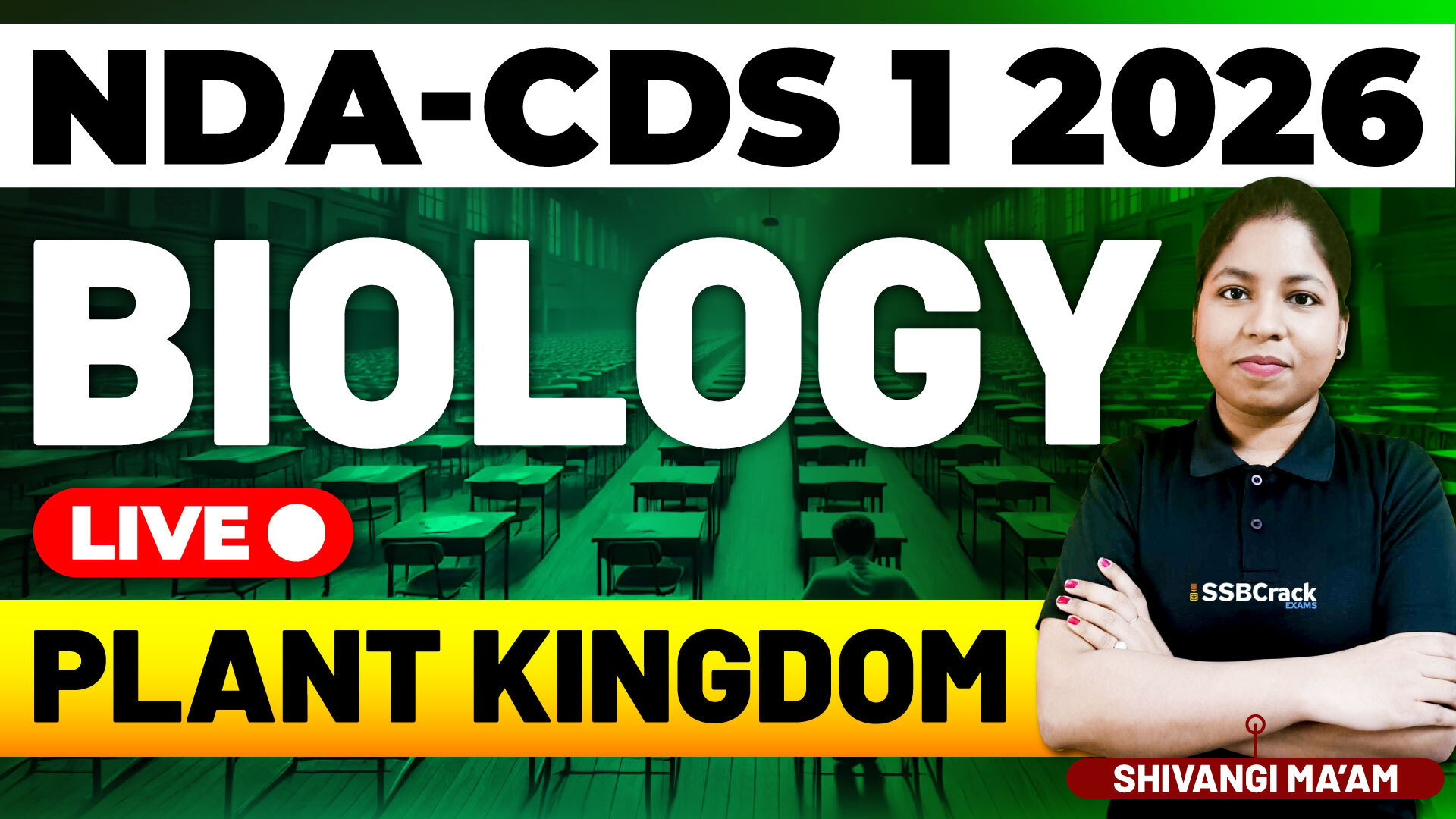The NDA (National Defence Academy) and CDS (Combined Defence Services) exams are conducted by the Union Public Service Commission (UPSC) to recruit candidates for the Indian Armed Forces.
In the General Science section, Biology plays an important role — especially for candidates from non-science backgrounds. The Plant Kingdom is a vital topic that helps understand the diversity, classification, and functions of plants, forming the foundation of environmental and life science questions in the exam.
Chapter Overview: Plant Kingdom
Introduction
The Plant Kingdom includes all multicellular, eukaryotic, photosynthetic organisms that produce their own food using sunlight (autotrophs). They play a crucial role in maintaining the balance of nature by providing oxygen, food, and shelter to other organisms.
The study of plants — Botany — helps us understand their structure, reproduction, classification, and ecological importance.
Main Subtopics
1. Classification of Plants
- Basis of classification:
Presence or absence of vascular tissues, seeds, and flowers. - Major groups:
- Algae – Simple, aquatic plants (e.g., Spirogyra, Chlamydomonas)
- Bryophytes – Amphibians of the plant kingdom (e.g., Moss, Liverwort)
- Pteridophytes – First vascular plants (e.g., Ferns, Lycopodium)
- Gymnosperms – Naked seed plants (e.g., Cycas, Pine)
- Angiosperms – Flowering plants with seeds enclosed in fruits (e.g., Mango, Rose)
2. Algae
- Mostly aquatic, chlorophyll-bearing thallophytes.
- Types based on pigments:
- Green algae (Chlorophyceae)
- Brown algae (Phaeophyceae)
- Red algae (Rhodophyceae)
- Reproduction: Vegetative, asexual, and sexual.
3. Bryophytes
- Lack true roots, stems, and leaves.
- Require water for fertilization.
- Life cycle shows alternation of generations.
- Example: Funaria (Moss), Riccia (Liverwort).
4. Pteridophytes
- First terrestrial plants with vascular tissues (xylem & phloem).
- Have true roots, stems, and leaves.
- Example: Fern, Selaginella.
- Reproduce by spores (no seeds).
5. Gymnosperms
- Vascular plants with naked seeds (not enclosed in fruit).
- Usually evergreen, woody plants.
- Example: Cycas, Pine, Deodar.
- Dominant sporophyte generation.
6. Angiosperms
- Flowering plants with seeds enclosed in fruits.
- Divided into:
- Monocots: One cotyledon (e.g., Wheat, Grass).
- Dicots: Two cotyledons (e.g., Mango, Rose).
- Most advanced and diverse group.
7. Alternation of Generations
- Life cycle includes haploid (gametophyte) and diploid (sporophyte) stages.
- Varies among groups — dominance of sporophyte increases from algae to angiosperms.
Conclusion
The Plant Kingdom represents the evolutionary journey of plants from simple, water-dwelling algae to complex, flowering angiosperms. Understanding their classification helps in recognizing plant diversity and ecological significance.
For NDA/CDS 1 2026, focus on:
- Key characteristics of each group
- Differences between algae, bryophytes, pteridophytes, gymnosperms, and angiosperms
- Examples and life cycle concepts
A solid grasp of this topic strengthens both your Biology knowledge and your General Science score in the exam.



















